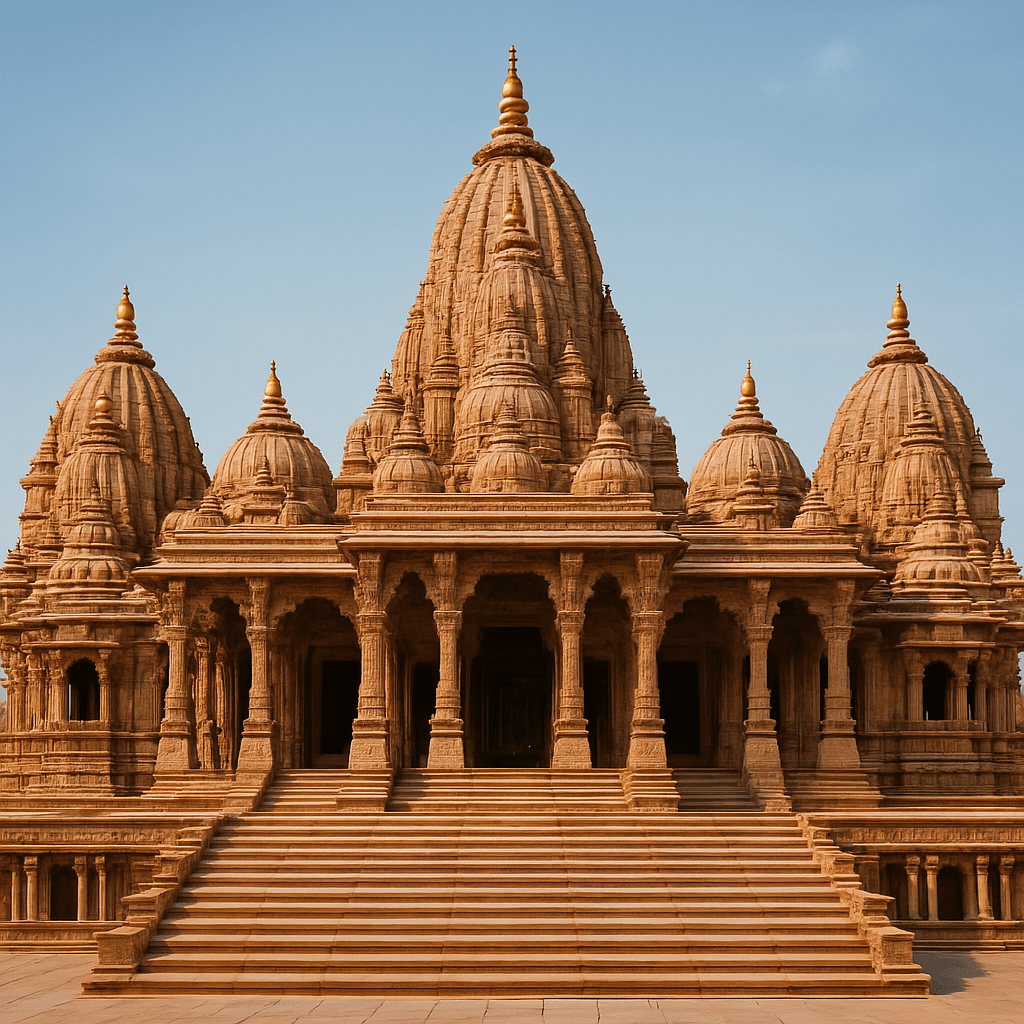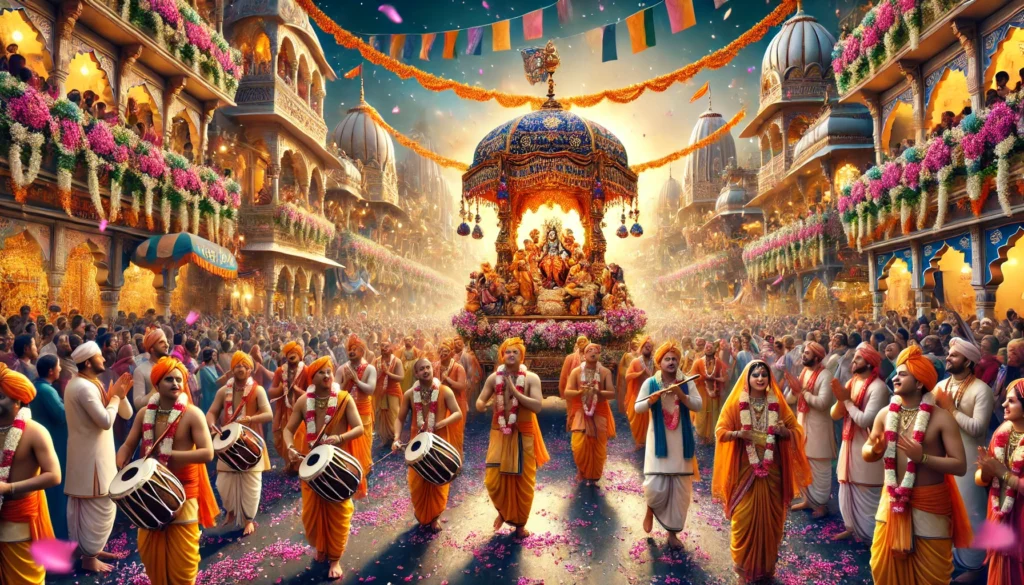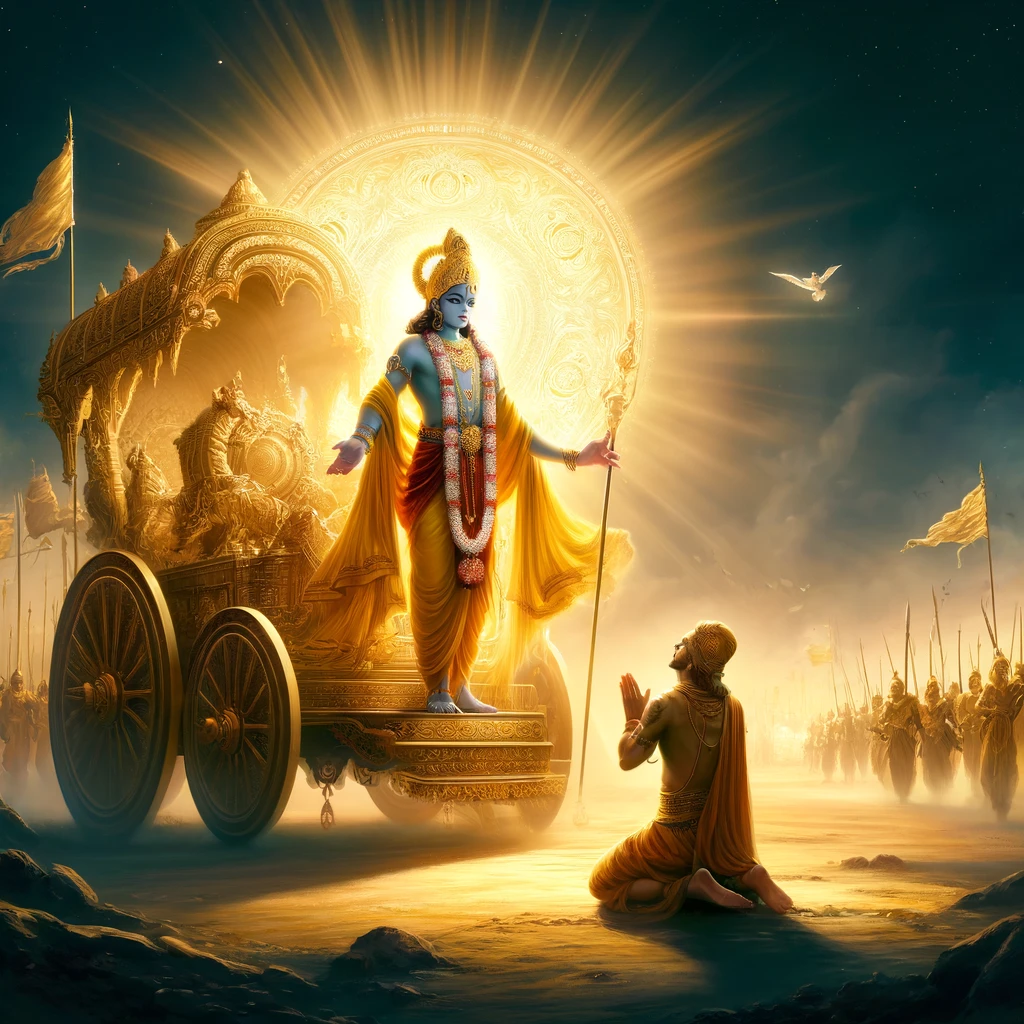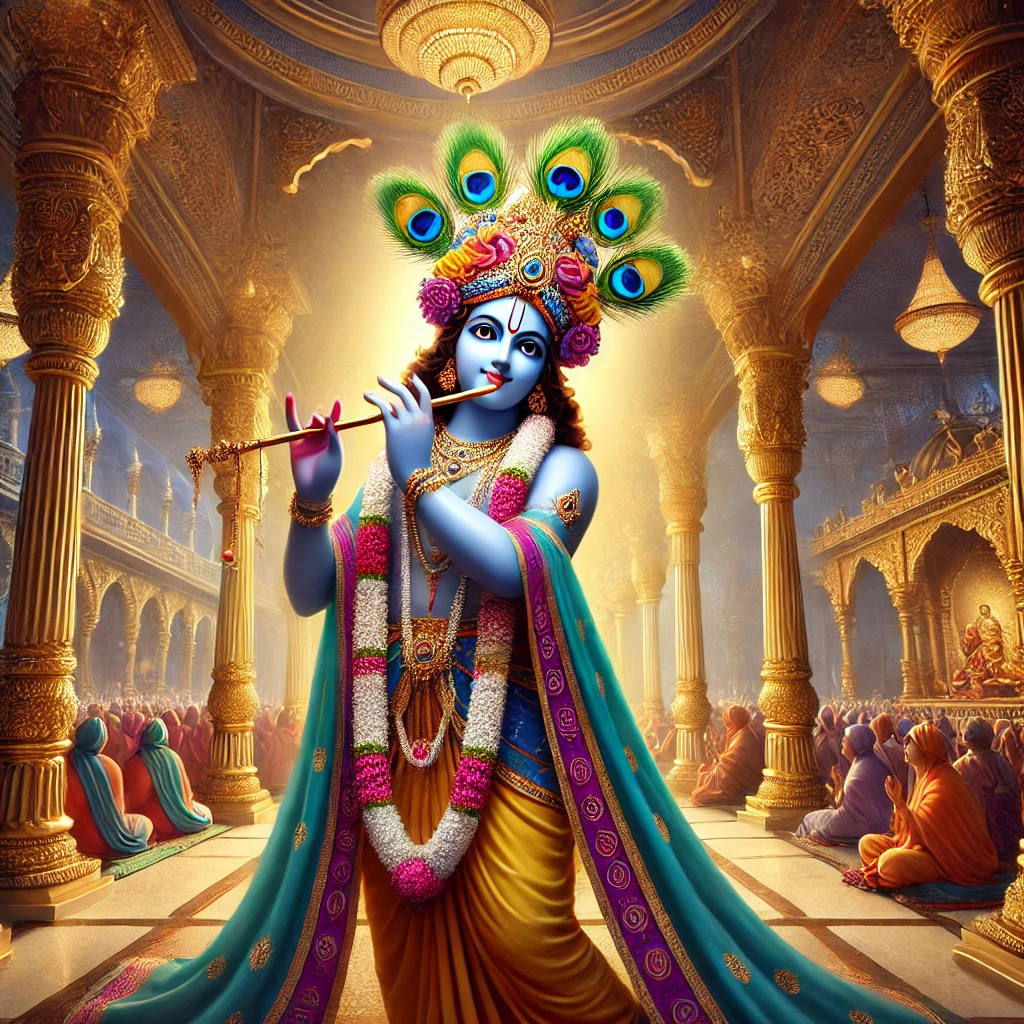Nityananda Trayodasi
Appearance Day of Lord Nityananda Prabhu
Lord Nityananda is the eternal associate of Chaitanya Mahaprabhu, the Supreme Personality of Godhead. Rarely is the name Nimai (Chaitanya Mahaprabhu) taken without that of Nitai (Lord Nityananda). Mahaprabhu cannot be approached or understood without the mercy of Nityananda Prabhu, who is the cardinal guru of all the universes and serves as an intermediary between Mahaprabhu and His devotees. He is the Lord’s active principle in both creation and lila. He is the second body of the Lord, manifesting as Balarama to Sri Krishna, Lakshmana to Sri Rama, and Nityananda Prabhu to Chaitanya Mahaprabhu. All other forms and expansions of the Lord emanate from this second body. Nityananda Prabhu is thus the source of Sankarshan, all the Vishnus, and Ananta Sesa. As Vishnu-tattva, He and Advaita Acharya are worshipped in the same category as Chaitanya Mahaprabhu. In the manifested earthly lila, Nityananda Prabhu is senior to Chaitanya Mahaprabhu by more than a decade. He has the whitish complexion of Lord Balarama. His garments resemble a cluster of blue lotus flowers, and His effulgence is said to surpass the grandeur of a rising moon at sunset. He has a deep, melodious voice, constantly sings the glories of Sri Krishna, and carries a red stick with benedictions for the devotees, but is feared by the demoniac. He has the carefree mood of a wild avadhuta, so absorbed is He in the love of Godhead that no one knows what He will do next.
Nityananda Prabhu was born around 1474 in Ekachakra, a small village in present-day West Bengal, India. His birthplace is commemorated by a temple known as Garbhavasa (sometimes referred to as Garbhasva), which continues to attract many pilgrims today. His parents, Hadai Ojha and Padmavati, were pious Brahmanas originally from Mithila. Nityananda Prabhu was born on the auspicious thirteenth day (Trayodashi) of the bright fortnight (Shukla Paksha) in the month of Magha (January–February). As a child, Nityananda—affectionately called Nitai—loved to enact the pastimes of Sri Krishna and Lord Rama with such authority and enthusiasm that the entire village would become immersed in devotional ecstasy. His favorite role was that of Lakshman, which he performed so convincingly, often adding details not found in the Ramayana, that villagers wondered whether he was simply acting or actually reliving his own divine pastimes. The village of Ekachakra was deeply absorbed in love for little Nitai, who spent the first twelve years of his life there.


Nitai traveled with Lakshmipati Tirtha for about 20 years, during which He visited all the holy places in the country, reminiscent of the manner that Balarama traveled while the battle at Kurukshetra raged on. Nitai is said to be later on initiated by Lakshmipati Tirtha. He also associated with another of Lakshmipati Tirtha’s famous disciple, Madhavendra Puri, who although his godbrother, was revered by Nitai as a spiritual master. Madhavendra Puri is famous for establishing the sweet truth of Madhurya-rasa which later became an integral part of Gaudiya Vaishnavism. Among the other disciples of Madhavendra Puri is Advaita Acharya, and Isvara Puri (the spiritual master of Caitanya Mahaprabhu).
Nityananda Prabhu met Caitanya Mahaprabhu in 1506, when He was 32 years old and the Lord 20. It is said that when Nityananda Prabhu reached the land of Nadia, He hid in the house of Nandan Acharya to heighten the ecstasy of meeting through separation. Caitanya Mahaprabhu, aware of the arrival of His eternal associate, dispatched Haridas Thakur and Srivas Pandit to search out Nitai, but they failed. Finally, unable to bear the separation any longer, Caitanya Mahaprabhu Himself went directly to Nityananda Prabhu. The ecstasy of the meeting was so transcendental that everyone witnessing it was awed by the sublime experience. A temple called Sri Gaura-Nityananda commemorates this meeting place in Nadia.
Nityananda Prabhu, in His role as the original spiritual master, was instrumental in spreading the yuga-dharma of sankirtana all over the Gauda-desh (Bengal, Orissa). His mercy knew no bounds, and people fortunate to come in contact with Him were inundated with the love of Godhead. It was by His mercy that Raghunatha Dasa, one of the six Goswamis, started the famous Danda Mahotsava festival of Panihati, a tradition that continues to this day, and was thus able to serve Chaitanya Mahaprabhu. He extended His mercy even to fallen souls like Jagai and Madhai, delivering them from their sinful lives and protecting them from the wrath of Chaitanya Mahaprabhu. Indeed, His mercy knew no bounds, and fortunate were those who tasted the nectar of His instructions.
When Nityananda Prabhu returned to Bengal at the request of Chaitanya Mahaprabhu, He decided to abandon His avadhuta status and become a grihastha (householder). He married Jahnavadevi and Vasudha, the two daughters of Suryadasa Sarakhel, who the brother of Gauridasa Pandit, an intimate associate of Chaitanya Mahaprabhu and the spiritual master of the famous Shyamananda Pandit. Nityananda Prabhu had a son, Virchandara, and a daughter,Gangadevi, from Vasudha. Soon after, Vasudha passed away and Jahanvadevi looked after the children. She later initiated Virchandra, and also became an instructing spiritual master to the likes of Shyamananda Pandit, Shrivasa Pandit and Narottama Dasa Thakur. Jahnavadevi is revered as a Vaishnavi, and she established the pre-eminent positon of women in the Vaishanava tradition.
Lord Nityananda wound up His earthly pastimes by merging into the deity of Krishna, known as Bankim Ray, not far from Ekachakra. Vaishanava Acharyas emphatically state that people who try to understand Chaitanya Mahaprabhu without receiving the mercy of Nityananda Prabhu will never succeed. One must pray very sincerely to Lord Nityananda Prabhu as the adi-guru (original spiritual master) to be delivered to the Lotus feet of Sri Chaitanya Mahaprabhu. The presence of Nityananada Prabhu is always felt in the presence of one’s own guru, for the guru is considered to be the living manifestation of Nityananda Prabhu’s love and mercy. His shakti (power) is what gives the disciple the ability to perform devotional service and experience spiritual bliss.




